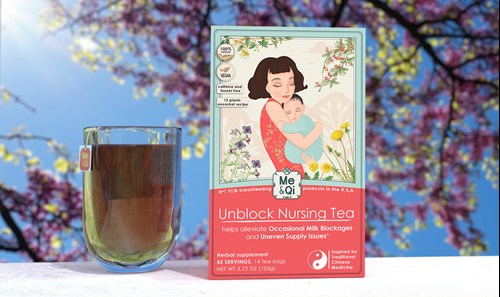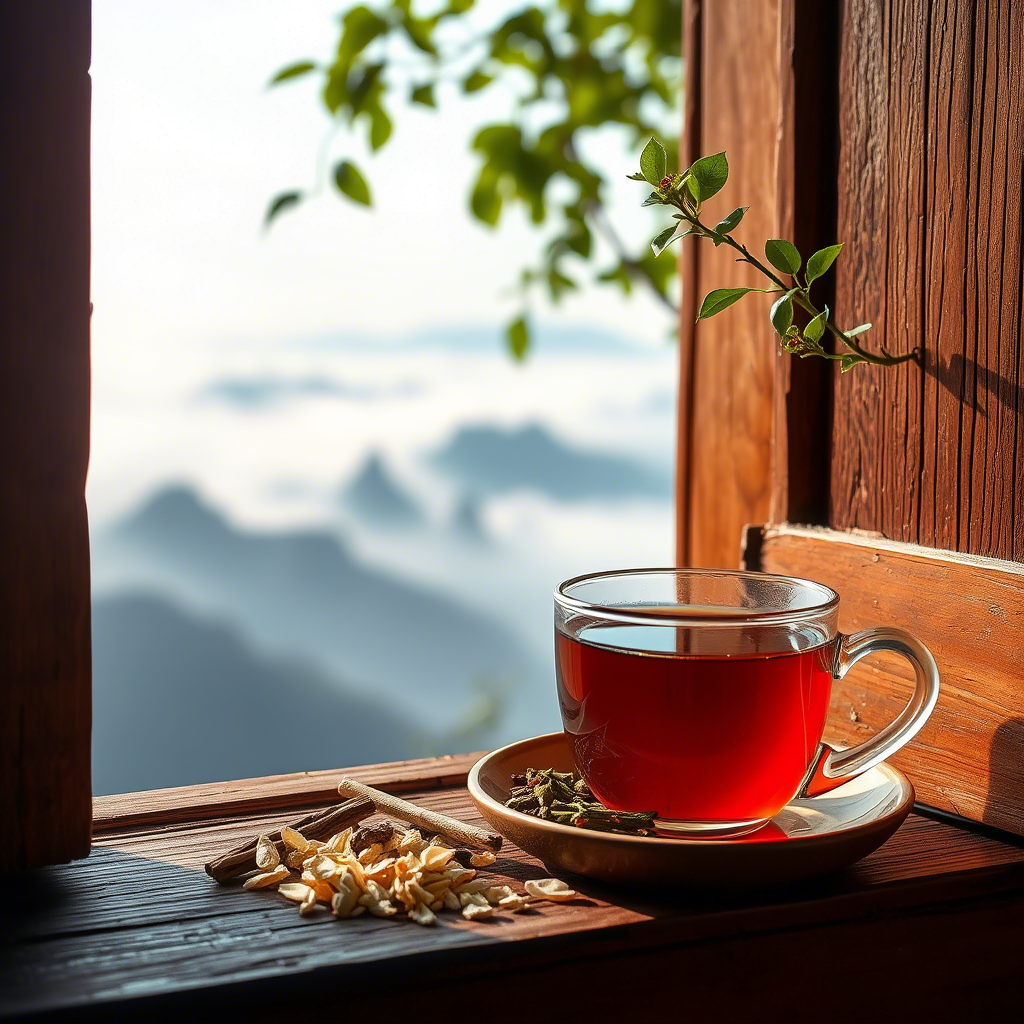Contents
- What is Mastitis
- What Are The Signs And Symptoms Of Mastitis?
- What Causes Mastitis?
- You Might Be More Vulnerable To Get Mastitis If:
- Mastitis Treatment At Home According To Western Medicine
- Breast Mastitis Causes And Treatment According to Traditional Chinese Medicine (TCM)
- 1. Liver Qi Stagnation
- 2. Stomach Fire or Heat
- 3. Blow Breast (Chui Ru)
What is Mastitis
Mastitis is characterized by swollen, aching, and hot breasts. This condition is more prevalent in breastfeeding women, but men and non-breastfeeding women can also develop it.
Lactation mastitis can lead to fatigue and headache, making it challenging to care for your child. Occasionally, it causes a mother to wean her child prematurely. However, continuing to breastfeed, even while taking an antibiotic or anti-inflammatory medicine for mastitis, is more beneficial for you and your child.
What Are The Signs And Symptoms Of Mastitis?
- Flu-like symptoms
Mastitis is a breast inflammation accompanied by influenza-like symptoms such as general fatigue, headache, body aches and fever of more than 101.3°F (38.5°C).
- Breast engorgement
Typically, the mother develops breasts engorgement symptoms such as red, swollen, bright and hot breasts, which are often very painful to touch.
- Large lumps or small nodules
Often, she observes hard large lumps or small nodules due to clogged milk ducts. They can appear across the whole breasts or even around the armpits.
- Nipple blebs
Nipple cracks are painful fissures that can develop in one or both breasts. Fissures can occur in anyone, but the most common causes are breastfeeding and mastitis.
- Abscesses
Occasionally, breast abscesses happen if mastitis worsens. Abscesses, a common type of noncancerous tumour, are typically sensitive and feel mobile under the skin. In this condition, Sometimes, a mother observes sticky pus or discharge coming from the nipple. To treat the condition fast, surgery can be performed to remove abscesses.
When faced with mastitis, there is no need to panic. Even though it is uncomfortable, it does not pose a significant risk to your baby. You can continue breastfeeding your baby, even if you have it.
What Causes Mastitis?
Western experts claim that Mastitis is typically caused by bacteria found in your baby's mouth or on the skin. These microorganisms enter the mother breasts via a nipple crack or milk duct opening and causes infection.
You Might Be More Vulnerable To Get Mastitis If:
- You breastfeed just in a single position. The mothers are advised to try different feeding positions to empty the whole breast evenly, in order to avoid plugged milk ducts.
- Your baby has poor latching technique. He/she might have a hard time getting enough milk, which puts more pressure on delicate nipple tissue during breastfeeding. This extra stress can cause nipple cracks or fissures.
- You use a tight bra or apply pressure on your breasts, which traps the milk in the ducts.
Mastitis Treatment At Home According To Western Medicine
Often, the breast infection can clear up on its own without medication, thanks to your body’s immune system. However, the situation can worsen with complications such as abscess, sticky pus or bloody nipple discharge. In these cases, your doctor will give you an oral antibiotic. The infection should be cured within ten days, but it may persist for up to three weeks.
To relieve pain and inflammation, mastitis home remedies include:
- Before feeding, apply warm and moist pad or take a warm shower to speed up the milk flow in the breasts.
- Apply cold pads during feedings to ease sharp and shooting pain.
- Breastfeed or pump at least every two hours to dissolve lumps or nodules in the milk ducts.
- If possible, rest and drink plenty of water.
- Provide a gentle circular massage during feeding sessions, beginning on the affected area's periphery and working inwards toward the nipple.
- In case of nipple fissure, use nipple shield during feeding and apply nipple cream after.
Unfortunately, as many postpartum mothers claim, these mastitis natural remedies only help to some extent or do not work at all. Many of them face recurrent mastitis and they are forced to wean earlier.
Breast Mastitis Causes And Treatment According to Traditional Chinese Medicine (TCM)
How to treat mastitis fundamentally? TCM explains the disease from a different perspective and offers alternative remedies to the problem in addition to the home remedies mentioned above. It has a long history of documenting Mastitis in many gynecology books.
According to TCM, mastitis is caused by three 'disharmonies of the body':
1. Liver Qi Stagnation
Other manifestations in addition to mastitis-related symptoms include: mood swings, mood swings, insomnia, irritability, depression, constipation, chest distension, and uneven milk supply.
Theory:
If a breastfeeding mother gets angry or depressed easily and her negative feelings are suppressed often, her Qi flow is impaired and stagnates in the Liver. Qi is the most vital substance in TCM, it can be referred to as ‘energy’ in Western concept. The Liver connects to the breasts via the Liver Channel; thus Stagnant Liver Qi leads to clogged milk ducts and blocked nipple orifices. As a result, milk cannot flow, forming lumps or nodules in the breasts.
In this case, the mother experiences swelling and firmness in her breasts, as well as severe, stabbing pain. Occasionally, only one of the breast's is affected, resulting in an unequal milk supply.
If Liver Qi does not circulate effectively for an extended period and is left untreated, Toxic Heat accumulates and causes nipple blisters and blebs, pus discharge, or abscesses. Most of the time this condition is accompanied by fever.
Mastitis Treatment according to TCM:
-
- Most importantly, try to calm the Liver Qi by adopting a more positive attitude. Find a way to decrease emotional tension, anger, and other negative feelings.
- Organize your schedule better so you experience less stress. Prioritize what really matters and think of giving up what doesn’t.
- Rest better and try to get more sleep.
- Remove yourself from sources of emotional stress.
- Don’t hide the negative feelings and seek assistance from family, friends, or professionals.
- Do some light activities, such as yoga or walking in the nature to alleviate emotional stress.

Consider using Unblock Nursing Tea in daily basis. It can help smooth Qi and Blood in the Liver thanks to some natural herbs such as Platycodon and Dong Quai.
2. Stomach Fire or Heat
Other manifestations in addition to mastitis-related symptoms: constipation, malar flush, dry mouth, red eyes, and thirst.
Theory:
If a nursing mother consumes an excessive amount of greasy and hot food after giving birth, the difficult-to-digest foods accumulate in the Stomach, producing toxins and Heat.
As the nipple is located in the Stomach Channel, the toxic Heat will naturally move from the Stomach to the breasts. It then clogs milk ducts and causes heaviness, stiffness, redness, pain, boil, swelling, and lumps in the breasts. This condition, if improperly managed, can result in abscesses, blisters, and pus discharge. Fever often happens spontaneously.
Mastitis Treatment according to TCM:
-
- During the period of mastitis, try simple but nutritious diet. Avoid heavy and hard to digest foods such as heavy sauce, red meat, dairy, as well as high-calorie items like chocolate.
- To crease body metabolism, try to do some light sports, such as walking or yoga.
Unblock Nursing Tea is also appropriate for this situation since it contains ‘cooling’ herbs such as Dandelion, Honeysuckle, and Chrysanthemum flowers. All these nature herbs eliminate toxins and Heat.
3. Blow Breast (Chui Ru)
Other manifestations in addition to mastitis-related symptoms: uneven milk supply.
Theory:
It is easy for breast or nipple skin to develop fissures if they become irritated due to poor baby-sucking techniques or inappropriate feeding positions. Cracks expose the mother to bacteria such as Staphylococcus aureus.
These bacteria get transmitted from the infant's mouth and nose to the mother's breasts and nipples. It then leads to infections, which worsen the fissures. Often, blebs, blisters, and sticky white spots appear on the nipples or breasts at the same time.
This is how Western medicine explains what causes puerperal mastitis, and it fits very well with TCM’s "Blow Breast" (Chui Ru) theory. According to TCM, a feeding baby blows on the breasts and transfers Toxic Heat to the mother due to the Phlegm stuck in baby’s diaphragm. As a result, the mother’s breast becomes engorged, feel hard, hot and painful and she feels thirsty.
This triggers a vicious circle, meaning Qi and Blood get stuck, the breast ducts get clogged, and milk doesn't flow. If this condition worsens, breast abscesses develop together with high fever.
Mastitis Treatment according to TCM:
Since the concept of Blow Breast is similar to the Western explanation for mastitis, you can try above-mentioned home remedies described in the beginning of the article.
On top of that, you can also try all-natural Unblock Nursing Tea. It contains herbs (eg: Platycodon and Dong Quai) that stimulate Qi and Blood circulation It also contains Chrysanthemum flowers, Dandelions, and Honeysuckle flowers that eliminate Heat and Toxins and clear pus.

